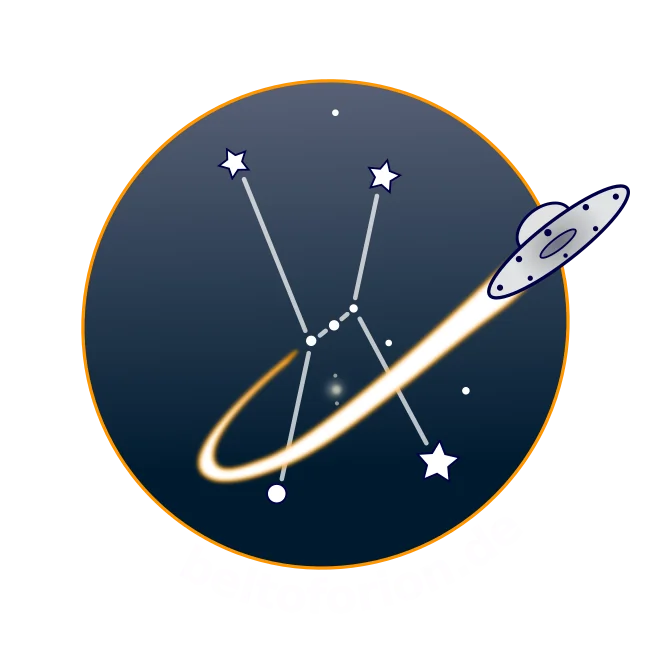This article may contain factual errors. It was created by the openai-ghostwriter 1.0.2. This is a python script for automatic generation of web pages powered by the OpenAI's GPT-3.
Dieser Artikel kann Unsinn und falsche Aussagen enthalten! Er wurde vom openai-ghostwriter 1.0.2 erzeugt. Das ist ein Python-Skript für die vollautomatische Erstellung von Webseiten.
The History of Space Exploration
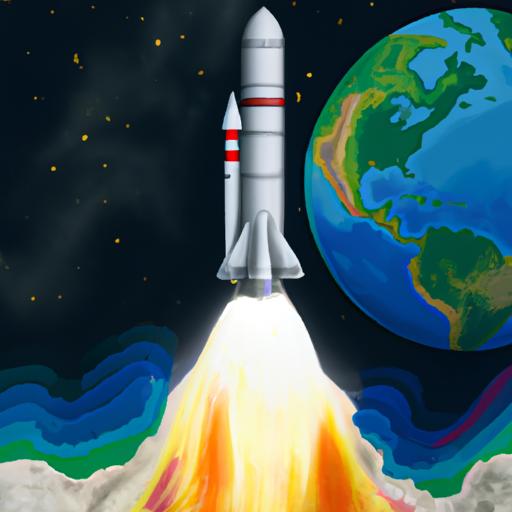
The history of space exploration is a long and fascinating one, stretching back to the very dawn of human civilization. From the earliest days, humans have been captivated by the night sky, seeking to understand its mysteries and explore its depths. Throughout the centuries, our species has made tremendous strides in understanding our place in the cosmos, from ancient astronomers charting the stars to modern-day astronauts walking on the moon.
In 1957, humanity took its first steps into space with the launch of Sputnik 1. This small satellite marked a major milestone in human history, as it was the first man-made object to ever orbit Earth. This event ushered in a new era of exploration and discovery that continues to this day. Since then, we have sent probes to all corners of our solar system and beyond, launched satellites into orbit around Earth, and even sent humans into space.
The Apollo program stands out as one of humanity’s greatest achievements in space exploration. In 1969, Neil Armstrong became the first person to set foot on another world when he stepped onto the surface of the moon. The success of this mission marked a major turning point for space exploration and opened up a whole new realm of possibilities for future generations.
Today, we are continuing to push further into space than ever before. We have sent robotic probes to study distant planets and moons in our solar system while also sending spacecraft farther out into deep space than ever before. We are also working towards sending humans back to the moon and eventually on to Mars.
Space exploration is an ongoing endeavor that will continue for many years to come. As we look ahead at what lies beyond our planet’s boundaries, we can take comfort in knowing that humanity has already achieved so much in such a short amount of time. With each new mission comes new knowledge about our universe and ourselves that will help us better understand our place within it.
Early Efforts
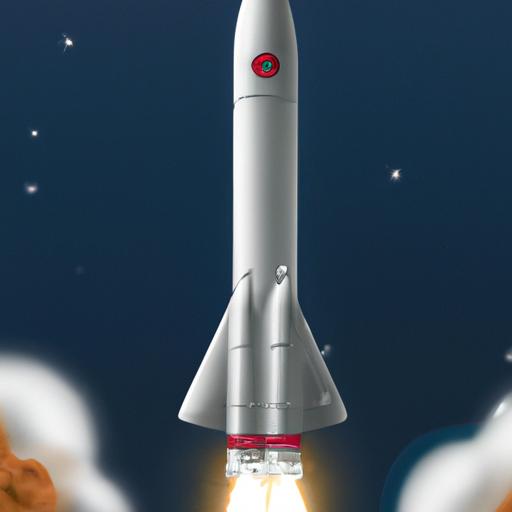
The history of space exploration is a long and inspiring one. From the first tentative steps of the early pioneers to the incredible achievements of today, it has been a journey of discovery and adventure. The earliest efforts were focused on understanding the basics of rocketry and propulsion, as well as developing the technology needed to launch satellites into orbit. As our knowledge grew, so did our ambitions, leading us to explore further into our solar system and beyond. It is an ongoing quest that will continue to challenge us for generations to come.
Rockets and Missiles
The concept of a rocket or missile dates back centuries, but it wasn't until the 20th century that they were developed into viable tools for space exploration. The first successful launch of a liquid-fueled rocket occurred in 1926, when Robert Goddard sent his rocket up 2.5 kilometers into the air. This marked a major milestone in rocketry and set off a flurry of activity as other countries began experimenting with their own designs.
In World War II, rockets and missiles were used extensively by both sides as weapons. Germany's V-2 missile was one of the most advanced designs at that time, capable of reaching speeds over 5,000 kilometers per hour and traveling more than 300 kilometers away from its launch site. After the war ended, many former Nazi engineers found work in other countries developing their own versions of these weapons.
In 1957, Russia launched Sputnik 1, which was not only humanity's first artificial satellite but also marked an important milestone in space exploration. It demonstrated that rockets could be used to send objects beyond Earth's atmosphere and opened up new possibilities for research and exploration. Soon after this success, both Russia and America began launching larger satellites into orbit.
In 1961, Yuri Gagarin became the first human to travel into outer space aboard Vostok 1. His flight lasted just 108 minutes but it showed that humans could survive in space and opened up a whole new realm for exploration. In 1969 Neil Armstrong became the first person to walk on the moon as part of NASA's Apollo 11 mission.
Rockets are still an essential tool for space exploration today. They are used to launch satellites into orbit around Earth as well as probes to explore other planets and moons throughout our solar system. Even more powerful rockets are being developed to take humans deeper into space than ever before.
The development of rockets and missiles has been an integral part of humanity's journey into outer space over the past century. From early experiments with liquid-fueled rockets to modern day spacecrafts capable of carrying humans beyond Earth's atmosphere, these early efforts have paved the way for many incredible achievements in science and technology.
Satellites and Probes
The first satellite ever launched into space was Sputnik 1, which was sent up by the Soviet Union in 1957. This small satellite revolutionized space exploration, as it provided scientists with valuable data about Earth’s atmosphere and environment. It also allowed for radio communication between two points on Earth that were not connected by wires or cables.
In 1958, the United States launched its own satellite called Explorer 1. This satellite was used to measure cosmic radiation levels in Earth’s atmosphere and helped to confirm the existence of the Van Allen radiation belts around our planet. In 1959, NASA launched its first lunar probe called Pioneer 4. This mission was designed to take pictures of the Moon’s surface and measure its gravitational field.
In 1961, cosmonaut Yuri Gagarin became the first human being to travel into outer space aboard Vostok 1. This historic event marked a new era in space exploration as it demonstrated that humans could survive in a weightless environment for extended periods of time. Later that year, Alan Shepard became the first American astronaut to go into space aboard Freedom 7.
In 1962, John Glenn became the first American astronaut to orbit Earth aboard Friendship 7. His mission paved the way for future manned missions into outer space such as Apollo 11 which landed Neil Armstrong and Edwin Aldrin on the moon in 1969.
The 1970s saw an increase in robotic probes being sent out into deep space to explore other planets and moons within our solar system. The Mariner 10 mission explored Mercury while Viking 1 and 2 explored Mars. Voyager 1 and 2 explored Jupiter, Saturn, Uranus and Neptune before heading off towards interstellar space.
In 1977 two unmanned spacecrafts named Voyager 1 & 2 were launched from Cape Canaveral Air Force Station carrying a golden record containing images of life on Earth as well as greetings from President Jimmy Carter in 55 languages!
The 1980s saw more ambitious missions such as Magellan which mapped Venus using radar imaging techniques while Galileo studied Jupiter's moons Io & Europa up close for extended periods of time.
Since then there have been numerous robotic probes sent out into deep space including Cassini-Huygens which studied Saturn's rings & moons; New Horizons which flew past Pluto; Dawn which orbited Ceres; Rosetta which orbited comet 67P/Churyumov-Gerasimenko; MAVEN which studied Mars' atmosphere; Juno which is currently orbiting Jupiter; OSIRIS-REx which is currently en route to asteroid Bennu; InSight which is studying Mars' interior structure & composition; TESS (Transiting Exoplanet Survey Satellite) which is searching for exoplanets outside our solar system; James Webb Space Telescope (JWST) set to launch later this year will be used to study star formation & galaxies far away from us!
These are just some examples of how far we have come since those early days when satellites & probes were first sent out into deep space! We have come so far since then but there is still much more work left to do if we are ever going to truly understand our place in this vast universe!
Space Race
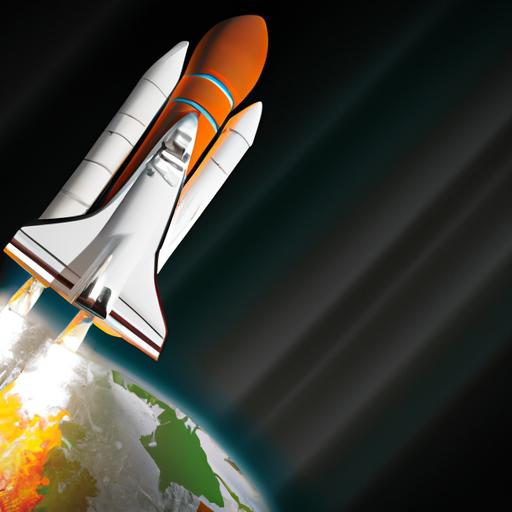
The Space Race began in the 1950s, when the United States and the Soviet Union competed to be the first to explore outer space. It was a race that captured the imagination of people around the world, as both countries sought to make history by being the first to launch a satellite, send a man into space, and land on the moon. For decades, these two superpowers pushed each other to greater heights of technological innovation and exploration. The result was an unprecedented era of scientific discovery and technological advancement that has shaped our understanding of our place in the universe.
Soviet Union
The Soviets were first to make significant advances in space exploration. In 1957 they launched Sputnik 1, the first artificial satellite to orbit Earth. This was followed by Luna 2 in 1959, which became the first spacecraft to reach the Moon's surface. In 1961 Yuri Gagarin became the first human being to travel into space aboard Vostok 1. The Soviets also achieved several other “firsts” during this period including launching an unmanned probe to Venus (Venera 3) and sending two cosmonauts on a joint mission (Voskhod 1).
In response to these achievements by the Soviets, President John F. Kennedy declared that America would put a man on the moon before 1970. To accomplish this goal NASA was established and Project Apollo was launched. On July 20th 1969 Neil Armstrong became the first human being to set foot on another celestial body when he stepped onto the lunar surface during Apollo 11.
The success of Apollo 11 marked an important milestone for humanity but it also marked an end to one of history’s most intense rivalries: The Space Race between two superpowers. Although both sides had made great strides in space exploration during this period, it is clear that without Kennedy’s bold challenge and NASA’s hard work, it is unlikely that either side would have been able to achieve such remarkable feats.
The Space Race between the Soviet Union and United States has left an indelible mark on our species’ history. It spurred technological advancements that have benefited us all and helped inspire generations of scientists and engineers who continue to push our boundaries ever further into space today.
The legacy of this competition is still felt today as nations around the world collaborate on ambitious projects such as building an international space station or sending probes beyond our solar system. As we look back at this historic rivalry between two superpowers we can be thankful for their contributions towards advancing humanity’s knowledge of outer space.
United States
In response to Sputnik, the United States created NASA (National Aeronautics and Space Administration) in 1958. NASA was tasked with leading America’s efforts in space exploration, research, and development. The agency quickly set out on an ambitious agenda of launching satellites, sending astronauts into space, and eventually landing on the moon.
The first American satellite was launched in 1958. Named Explorer 1, it was designed to study cosmic rays and other phenomena occurring in outer space. In 1961, Alan Shepard became the first American astronaut to reach space aboard Freedom 7. His mission lasted only 15 minutes but marked a major milestone for NASA.
NASA continued its progress throughout the 1960s with several successful missions including Project Mercury (the first manned orbital flight), Gemini (the first rendezvous mission), Apollo (the first lunar landing mission), Skylab (the first US orbital station), and Apollo-Soyuz Test Project (the first joint US-Soviet mission).
The highlight of this period came on July 20th 1969 when Neil Armstrong became the first human being to set foot on the moon. This event marked a major victory for America in its quest for dominance over outer space.
After achieving its goal of landing on the moon, NASA shifted its focus towards exploring other planets within our solar system such as Mars and Venus. In 1975, two Viking probes were sent to Mars to search for signs of life while Pioneer 10 became the first spacecraft to reach Jupiter’s atmosphere.
In 1981, Columbia became America’s first reusable spacecraft when it completed its maiden voyage into orbit around Earth. This marked another milestone for NASA as it demonstrated that spacecraft could be reused multiple times instead of being discarded after each mission.
Throughout the 1980s and 1990s, NASA continued its progress by launching several probes such as Galileo (to study Jupiter) and Magellan (to map Venus). In 1990, Hubble Space Telescope was launched which allowed astronomers to observe distant galaxies more clearly than ever before.
Today, NASA continues its efforts towards exploring our solar system with missions such as Cassini-Huygens which is studying Saturn’s moons; New Horizons which is heading towards Pluto; Juno which is orbiting Jupiter; Dawn which is studying dwarf planet Ceres; MAVEN which is studying Mars’ atmosphere; OSIRIS-REx which will collect samples from an asteroid; and Insight which will study Mars’ interior structure.
The United States has come a long way since 1957 when it began its journey into outer space with Sputnik 1. Over six decades later, America remains at forefront of space exploration thanks largely due to pioneering work done by NASA.
Modern Era
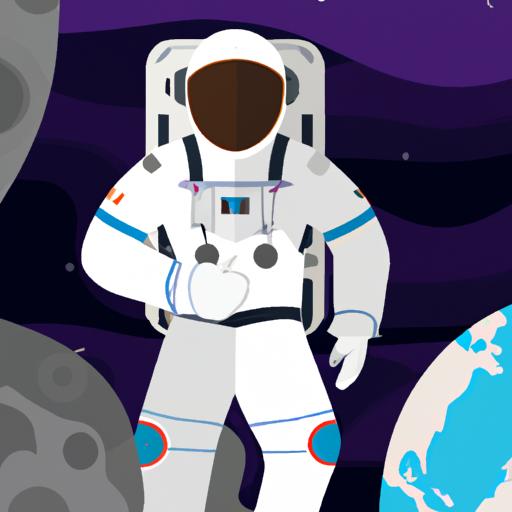
Since the dawn of civilization, humans have looked up to the night sky with wonder and curiosity. We have longed to explore the vastness of space, and our dreams have become a reality in the modern era. Space exploration has been an incredible journey, from the first satellite launch in 1957 to the first human on the moon in 1969. Since then, we've sent probes to all corners of our solar system, sent rovers to Mars, and even explored beyond our own galaxy. We are now closer than ever before to understanding more about our universe and uncovering its secrets.
International Cooperation
In 1998, the International Space Station began construction. The ISS is a joint project between NASA, Roscosmos (Russia), JAXA (Japan), ESA (Europe) and CSA (Canada). It is a habitable artificial satellite that orbits Earth at an altitude of about 400 km. Since its launch, it has served as a platform for scientific research and technological development. Astronauts from all over the world have lived on board and conducted experiments in fields such as biology, physics, astronomy and more.
The Hubble Space Telescope was launched in 1990 with contributions from NASA and ESA. It is a powerful telescope that orbits Earth at an altitude of 600 km. Its primary mission was to observe distant galaxies and stars in order to gain insight into their formation and evolution. The telescope has provided us with unprecedented views of our universe, allowing us to see further back in time than ever before.
In 2011, China became the third country after Russia and the United States to independently launch humans into space with its Shenzhou 8 mission. This marked a major milestone for China's space program and opened up new possibilities for international collaboration in space exploration.
In recent years, there have been several initiatives aimed at increasing international cooperation in space exploration. In 2015, NASA announced its Asteroid Redirect Mission which will involve sending robotic spacecrafts to capture an asteroid sample for study on Earth. This mission will be conducted jointly with ESA and JAXA.
In 2018, SpaceX launched its Falcon Heavy rocket carrying two dozen satellites from six different countries including USA, Canada, Germany, Spain, Finland and Sweden. This was another example of how nations can work together towards common goals such as exploring outer space.
International cooperation has also been instrumental in advancing our knowledge about Mars. In 2016, NASA’s Curiosity rover landed on Mars as part of its Mars Science Laboratory mission which included contributions from many countries including France, Germany and Spain.
The future of space exploration looks bright thanks to this spirit of international cooperation amongst nations around the world. We are now closer than ever before to unlocking some of the mysteries of our universe through collaborative efforts such as these.
Exploration of the Solar System
In 1962, NASA launched Mariner 2 on a mission to Venus. This was the first successful interplanetary mission and it provided us with valuable data on Venus’s atmosphere and surface conditions. The success of this mission paved the way for future planetary exploration.
In 1965, NASA launched Mariner 4 on a flyby mission to Mars. This was the first spacecraft to take close-up photographs of another planet from space. The images revealed an inhospitable environment with no evidence of life or water. Despite this initial disappointment, Mariner 4 opened up a new era in Mars exploration.
In 1969, NASA sent Apollo 11 astronauts Neil Armstrong and Edwin “Buzz” Aldrin to become the first humans to walk on the Moon. This historic event marked a major milestone in human exploration of space and inspired generations of scientists and engineers.
In 1975, two Soviet probes named Venera 9 and 10 became the first spacecraft to land on another planet when they touched down on Venus’s surface. They sent back remarkable images of its barren landscape before succumbing to its extreme temperatures.
In 1976, NASA launched Viking 1 and 2—the first spacecraft designed specifically for Mars exploration. These probes conducted experiments looking for signs of life on Mars but ultimately found none. However, they did provide us with invaluable data about Martian geology.
In 1977, Voyager 1 and 2 were launched by NASA as part of an ambitious mission to explore Jupiter, Saturn, Uranus, Neptune and their moons. Along with providing us with stunning images of these distant worlds, Voyager 1 also took humanity’s first photograph from beyond our Solar System in 1990.
In 1989–90, two more spacecraft—Galileo and Ulysses—were sent by NASA into deep space for further exploration beyond Jupiter’s orbit. Galileo studied Jupiter’s atmosphere while Ulysses explored solar wind near Earth’s poles.
Since then there have been numerous robotic missions sent out by various countries around the world including Japan's Hayabusa probe which returned samples from an asteroid in 2010; India's Chandrayaan-1 which mapped lunar minerals; China's Chang'e 3 which landed a rover on the Moon; Europe's Rosetta which studied comet 67P/Churyumov–Gerasimenko; Russia's Phobos-Grunt which attempted (unsuccessfully) to land a probe on one of Mars' moons; as well as many others.
More recently we've seen some exciting developments in human spaceflight such as SpaceX's Crew Dragon capsule becoming the first commercial spacecraft to carry astronauts into orbit in 2020 or China launching its own crewed mission into low Earth orbit later that same year.
The modern era has seen incredible advances in our knowledge about our Solar System thanks largely due to robotic probes sent out by various countries around the world but also thanks to human explorers who have ventured out into deep space aboard their own spacecrafts.
